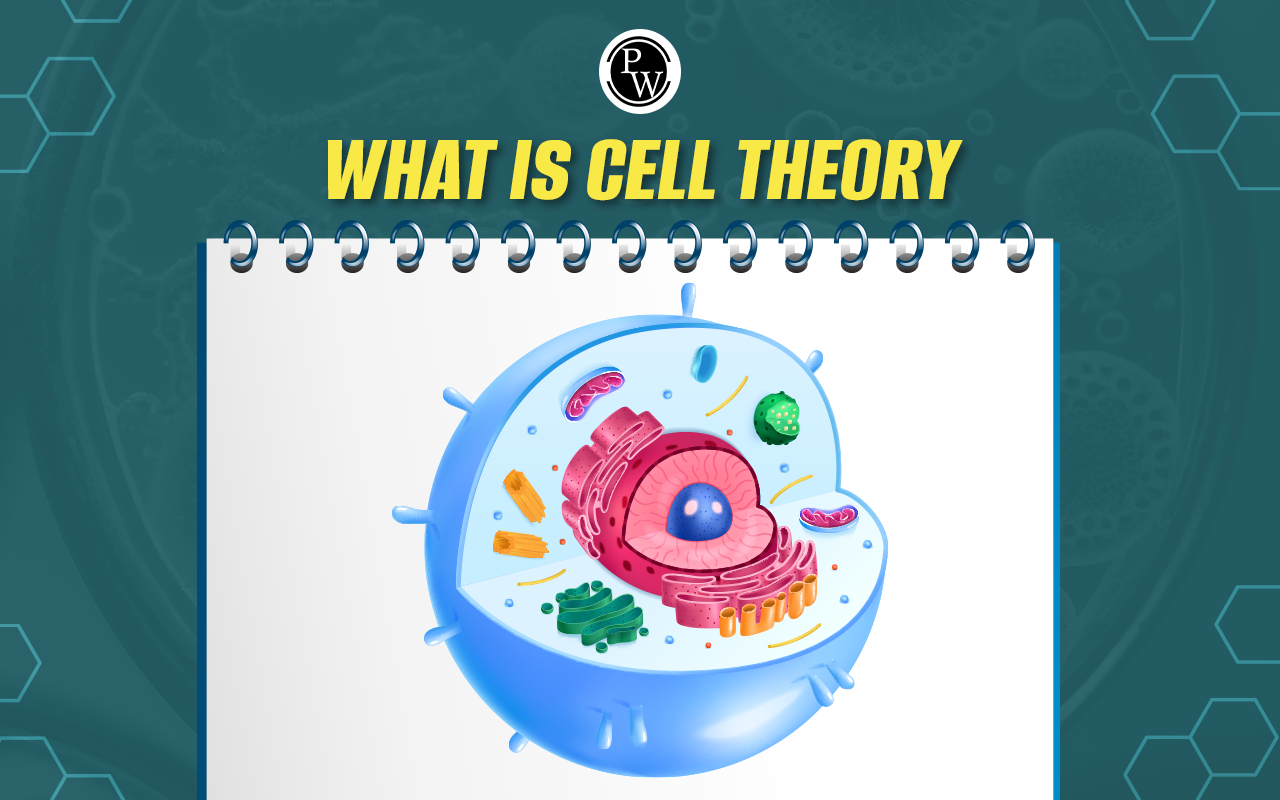
Somatic cells are the cells found in the body, excluding sperm and egg cells, which are known as germ cells. In humans, somatic cells are diploid, meaning they have two sets of chromosomes, with one set inherited from each parent. Mutations in the DNA of somatic cells can impact the individual, but they are not passed on to their offspring.
All living organisms are composed of one or more cells known as somatic cells. In humans, somatic cells are diploid, containing two sets of chromosomes inherited from each parent. While somatic mutations can affect the individual carrying them, they are not heritable and do not influence the offspring. Detailed NEET Biology Notes on somatic cells are provided in the article below.Somatic Cells Meaning
In cellular biology, a somatic cell refers to any biological cell that constitutes the body of a multicellular organism, excluding gametes, germ cells, gametocytes, or undifferentiated stem cells. Somatic cells undergo division through mitosis and form the structural and functional components of an organism's body. Gametes are produced through meiosis within the germ cells of the germline and unite during sexual reproduction. Stem cells also divide via mitosis but can differentiate into specialized cell types. In mammals, somatic cells make up internal organs, skin, bones, blood, and connective tissues. Mammalian germ cells produce spermatozoa and ova, which fuse during fertilization to form a zygote. Somatic cells do not include germ cells; they may pass on mutations to their cellular descendants but not to the organism's descendants. In sponges, undifferentiated somatic cells form the germ line, while in Cnidaria, specialized somatic cells serve as the origin of the germline. Mitotic cell division excludes diploid somatic cells; only certain cells, such as germ cells, participate in reproduction.Somatic Cells Types and Examples
Somatic cells encompass all cells in an organism except for germ cells, namely sperm and egg cells. These cells constitute the majority of an organism's cellular composition and are vital for its growth, development, and repair processes. There exist numerous distinct types of somatic cells, each performing specialized functions. Some of the principal types of somatic cells include: Epithelial cells: These cells form the body's surface and line its organs and cavities, safeguarding underlying tissues against harm and infection. Examples include skin, stomach lining, and lung lining cells. Connective tissue cells: These cells provide structural support to the body and connect different tissues. Examples include bone, cartilage, and blood cells. Muscle cells: These cells enable bodily movement and are categorised into skeletal, smooth, and cardiac muscle cells. Skeletal muscle cells are linked to bones and facilitate limb movement. Smooth muscle cells are situated in organ walls, such as the stomach and intestines, aiding in the movement of food and other substances. Cardiac muscle cells are found in the heart, responsible for pumping blood. Nerve cells: Also known as neurons, these cells transmit messages throughout the body, enabling sensations like touch and cognition. Fat cells: These cells store energy in the form of fat, insulating the body and protecting its organs. The aforementioned types represent only a fraction of the diverse range of somatic cells. Each type possesses a distinct structure and function, contributing significantly to the body's overall functioning.Somatic Cells Characteristics
Somatic cells are integral components of our body, fulfilling various roles in maintaining our health and overall function. These cells differ from germ cells, which are responsible for reproduction, and constitute the majority of our body's cellular makeup. Below are key attributes of somatic cells:- Diploid Nature: Somatic cells are typically diploid, containing two sets of chromosomes inherited from each parent. This arrangement ensures genetic diversity and stability.
- Specialized Functions: Somatic cells are specialized to execute specific functions within the body. For instance, muscle cells contract, while nerve cells transmit signals.
- Non-Reproductive: Unlike germ cells, somatic cells do not partake in reproduction or gamete (sperm or egg) formation.
- Mitosis: Somatic cells undergo mitosis, a division process yielding two identical daughter cells. This process is vital for tissue growth, repair, and maintenance.
- Gene Expression: Somatic cells selectively express genes necessary for their specific function. This regulation enables cells to perform distinct roles despite sharing the same genetic material.
- Limited Lifespan: Somatic cells have a finite lifespan and eventually undergo cell death (apoptosis). In contrast, germ cells possess potential immortality through new organism production.
- Genetic Variation: Although somatic cells are generally genetically identical within an individual, they can accumulate mutations over time. Unregulated mutations can lead to diseases such as cancer.
Somatic Cells In Plants
Somatic cells, also known as vegetative cells, are fundamental units of a plant's structure, excluding reproductive cells such as sperm and egg cells. Somatic cells in plants perform several essential functions: They contribute to the growth and development of the plant. They facilitate photosynthesis in plant cells containing chloroplasts. They provide structural support to the plant. They store nutrients and water. They transport water and nutrients throughout the plant. Somatic cells in plants undergo mitosis, a process that produces two genetically identical daughter cells from a parent cell. This process allows plants to grow and regenerate.Sexual Reproduction in Flowering Plants
Somatic Cells Multiply By
Somatic cells divide through mitosis, resulting in two identical daughter cells with the same number of chromosomes. This process is vital for growth, repair, and tissue regeneration in multicellular organisms. Key steps of mitosis:- Chromatin condenses: DNA coils into visible chromosomes.
- Nuclear envelope breaks down: The nucleus's membrane dissolves.
- Spindle fibers form: Microtubules create structures between centrosomes.
- Chromosomes attach: Spindle fibers link to protein complexes on chromosomes.
- Chromosomes move: Spindle fibers pull sister chromatids apart to opposite poles.
- Nuclear envelopes reform: New membranes form around daughter chromosomes.
- Cytokinesis occurs: The cell cytoplasm divides, forming two daughter cells.
Somatic Cells Are Haploid Or Diploid
Somatic cells are the cells that make up the entire body of an organism, excluding the reproductive cells (sperm and egg). These cells contain all the genetic instructions of the organism, which are bundled into structures called chromosomes. Somatic cells are diploid, meaning they have two complete sets of chromosomes, with one set inherited from each parent. In humans, somatic cells have 46 chromosomes, arranged in 23 pairs. These pairs are known as homologous chromosomes because they carry genes for the same traits, although they may have different versions of these genes. The number of chromosomes in somatic cells can vary between species. For example, fruit flies have 8 chromosomes in their somatic cells, while dogs have 78.Somatic Cells Mitosis Or Meiosis
Somatic cells undergo a process known as mitosis, which is a vital cell division mechanism leading to the formation of two daughter cells that are genetically identical to the parent cell. This process plays a crucial role in the growth, repair, and regeneration of tissues within the body. In contrast, meiosis is another form of cell division that culminates in the production of four daughter cells, each containing half the number of chromosomes as the parent cell. Meiosis is primarily responsible for generating gametes, namely sperm and egg cells, which are essential for sexual reproduction.Somatic Cells and Germ Cells
Cells in the human body can be broadly categorised into two main types: somatic cells and germ cells. Somatic cells, excluding sperm and egg cells, are diploid, containing two complete sets of chromosomes inherited from each parent. They are vital for the body's development, growth, repair, and function, with over 200 specialised types. For instance, muscle cells enable movement, nerve cells transmit signals, and skin cells protect from the environment. Somatic cells replicate through mitosis, producing genetically identical daughter cells. Mutations in somatic cells can lead to diseases such as cancer, but these mutations are not passed on to offspring. In contrast, germ cells, located in the gonads, are haploid, with only one set of chromosomes. They give rise to sperm and egg cells through meiosis, a process where the chromosome number is halved. Mutations in germ cells can be inherited by offspring, unlike those in somatic cells.Somatic Cells vs Gametes
Somatic cells and gametes are two types of cells in multicellular organisms. Somatic cells make up the body, excluding sperm and egg cells, and are responsible for growth and repair. They are diploid and reproduce through mitosis. Gametes are sex cells produced in the gonads, fuse during fertilization to form a zygote, and are haploid, produced through meiosis. Physics Wallah provides structured NEET online courses for Class 12 students . Our coaching includes guidance from experienced teachers, interactive sessions, study materials, practice tests, and past papers to help students excel in the NEET exam. Join Now!| NEET Exam Important Links | |
|---|---|
| NEET Syllabus | NEET Biology Diagrams |
| NEET Biology MCQ | NEET Biology Chapter wise Weightage |
| NEET Biology Notes | NEET Previous Year Question papers |
Somatic Cells FAQs
What are somatic cells?
Somatic cells are any of the cells in the body that are not involved in reproduction. They make up the tissues, organs, and other parts of an organism, and they contain the full set of chromosomes (called diploid) that are inherited from both parents.
Which cell is an example of a somatic cell?
Examples of somatic cells include nerve cells, blood cells, muscle cells, and bone cells. These cells are all part of the body and are not involved in reproduction.
What is a gamete and somatic cell?
Somatic cells make up the body of an organism and divide through a process called mitosis. Gametes, on the other hand, are reproductive cells that are produced through a different process called meiosis. Gametes, such as egg and sperm cells, are involved in sexual reproduction.
Is sperm a somatic cell?
No, sperm is not a somatic cell. Somatic cells are any cells in the body other than the reproductive cells (eggs and sperm). Somatic cells are diploid, meaning they have two sets of chromosomes, one from each parent.
What is a parent cell?
A parent cell is a cell that gives rise to other cells through the process of cell division. This can include cells that divide to produce two or more daughter cells, as well as stem cells that give rise to other types of cells. Another term for a parent cell is a mother cell.
🔥 Trending Blogs
Talk to a counsellorHave doubts? Our support team will be happy to assist you!

Check out these Related Articles
Free Learning Resources
PW Books
Notes (Class 10-12)
PW Study Materials
Notes (Class 6-9)
Ncert Solutions
Govt Exams
Class 6th to 12th Online Courses
Govt Job Exams Courses
UPSC Coaching
Defence Exam Coaching
Gate Exam Coaching
Other Exams
Know about Physics Wallah
Physics Wallah is an Indian edtech platform that provides accessible & comprehensive learning experiences to students from Class 6th to postgraduate level. We also provide extensive NCERT solutions, sample paper, NEET, JEE Mains, BITSAT previous year papers & more such resources to students. Physics Wallah also caters to over 3.5 million registered students and over 78 lakh+ Youtube subscribers with 4.8 rating on its app.
We Stand Out because
We provide students with intensive courses with India’s qualified & experienced faculties & mentors. PW strives to make the learning experience comprehensive and accessible for students of all sections of society. We believe in empowering every single student who couldn't dream of a good career in engineering and medical field earlier.
Our Key Focus Areas
Physics Wallah's main focus is to make the learning experience as economical as possible for all students. With our affordable courses like Lakshya, Udaan and Arjuna and many others, we have been able to provide a platform for lakhs of aspirants. From providing Chemistry, Maths, Physics formula to giving e-books of eminent authors like RD Sharma, RS Aggarwal and Lakhmir Singh, PW focuses on every single student's need for preparation.
What Makes Us Different
Physics Wallah strives to develop a comprehensive pedagogical structure for students, where they get a state-of-the-art learning experience with study material and resources. Apart from catering students preparing for JEE Mains and NEET, PW also provides study material for each state board like Uttar Pradesh, Bihar, and others
Copyright © 2025 Physicswallah Limited All rights reserved.
Get App









